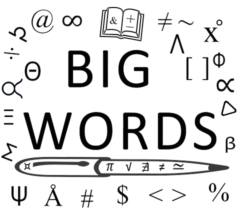My blog focuses on Financial Literacy/Money and Business/Entrepreneurship. When you’re generating a product of any kind, its quality is key. It will of course depend on the type of product. The following contributed post is entitled, How Is “Product Quality” Really Defined?
* * *

Photo by This Is Engineering: https://www.pexels.com/photo/engineers-in-meeting-3912477/
The idea that a business could and should invest in product or service quality is always at the top of the list when considering how to reinvest profits. The companies that endlessly seek to better their portfolio and put their users first are commonly those able to compete for the longest amount of time.
However, it’s also true that “product quality” is just a vague term and can refer to so many dozens of different focuses, that to recommend it is akin to giving a platitude. “Improving quality” doesn’t just happen because you want it to, digging into specifications, and sometimes quite boring detail, will be important.
For example, you may offer a near-identical product to another manufacturer, but perhaps your user manual is much clearer, with better installation and maintenance instructions, to the point where people naturally consider you more accessible and reliable. This might seen tangential to the product, but it’s part
Better Materials Can Define Better Results
You’ve probably noticed how some woodworking machines, such as those developed by Excitech at https://www.excitechaustralia.au/, just feel more solid than others. Quality alterations usually comes down to what they’re made from, as those with sturdy bases and curated by technicians who understand the craftsman experience operate leaps and bounds above those that wobble during use. If higher-grade metals and components cost more they’re usually worth it, as they’re going to save you money. This is because you’re not constantly replacing parts or dealing with inaccurate cuts.
Most consider this an investment in the end product for customers, as they can tell when something’s built to last versus something that’s just built to sell or generate the end result quickly.
Compatibility Guides
Think about the last time you bought something and couldn’t figure out how to set it up properly. It’s annoying, but we alluded to manual writing in the post above. However, you’ll also find that part of instructions that relate to compatibility need to be crystal clear.
If your manuals are easy to follow but as part of your branding you also clearly list the syncronicities or connections the product can make, it frames you in the context of what a customer understands about other products. That’s a UX effort that could make a major impact and improvement in how people view you.
Always Consider Feedback
Your customers are using your equipment every day, so they’re going to spot issues or improvements you might miss. If you can convert that into a roadmap for where to focus your efforts and have strong community outreach, people rarely feel like this iteration of the product is the last one they should ever be interested in, and there’s quite a live expectation to that, even if you only launch a new product every two years. Keep your ears open, because if there’s a safety feature that could be better, or they want a more comfortable grip on a tool, you have somewhere to start.
With this advice, you’re certain to define product quality on your own terms.
